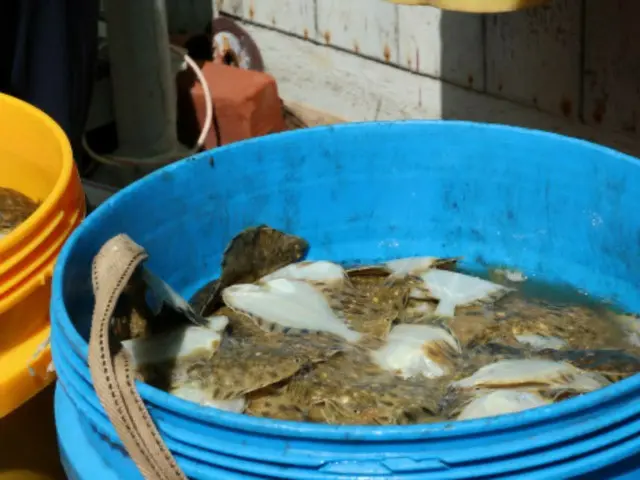This is because it is predicted that water temperatures in the oceans around the Korean Peninsula will continue to rise until 2100, meaning that long-term “changes” are necessary.
According to the "2024 Fisheries Climate Change Impact and Research Report" released by the National Institute of Fisheries Science and Technology on the 11th of this month,
Over the six-year period (1968-2023), the annual average surface water temperature in Korean waters has risen by 1.44°C, more than twice the global average (0.7°C). In particular, the East Sea waters, which have been cooler than the West and South Seas, have risen by 1.44°C.
The surface water temperature in the region rose by 1.9°C during the period in question, a significantly higher rise than both the West Sea (1.27°C) and the South Sea (1.15°C).
It is expected that this trend of high water temperatures will continue in the future.
The institute estimates that by 2100, the surface water temperature in the seas off the Korean Peninsula could rise by up to 4°C from the current level. This is assuming that there is no effort to decarbonize, such as by expanding the use of fossil fuels or expanding development.
Water temperatures are expected to rise by up to 5°C. Due to changes in temperature, fishery production volume fell from 1.51 million tons in the 1980s to 1.16 million tons in the 2000s, and is expected to reach 1.2 million tons in the 2020s.
The aquaculture industry has also been hit by continuous damage, with damage to the industry from natural disasters over the 13 years from 2011 to 2023 totaling 326 billion won.
Of this, damage caused by high water temperatures accounted for 60% (194.7 billion won), more than half. As climate change has a direct impact on the marine environment and the fishing industry, the Ministry of Oceans and Fisheries has also begun to take measures.
The Ministry of Industry and Trade will form a joint task force (TF) with related agencies to respond to climate change in the fisheries sector and will put forward a response plan for the fisheries sector by the end of the year.
As a result, the Ministry of Oceans and Fisheries now has the legal basis to set up an ocean and polar climate observation network, and has allocated an additional 2.8 billion won in next year's budget to set up an integrated management system for monitoring and predicting climate change in the Korean Peninsula's oceans.
However, in order to have a sustainable climate change response, it is necessary to continue research over the long term and to prepare comprehensive laws and regulations.
According to the report, "Study on sustainable development plans for the fisheries industry in the next 10 years," the number of climate change adaptation projects among the technological development projects in the fisheries sector conducted in Korea was an average of 17 per year.
The company has been developing varieties that are more adaptable to high water temperatures, but its international patents have focused on a few technologies, such as feed for aquaculture facilities and feed supply equipment.
Kim Eun-ah, head of the innovation and growth group at the National Assembly Future Institute, said, “We will develop a digital technology-based
"We will need to invest in various research and development projects, such as upgrading response systems for climate change, fisheries scenarios for changes in the marine environment, and smart aquaculture technology," he said.
"We need to consider ways to integrate the traditional policies of the past and foster the role of local governments," he said. Legislation was also raised as an important issue.
Of the 28 bills submitted, 61% (17) were rejected. Kim said, "We need to establish legal systems in a variety of areas, such as sea level rise and biodiversity crises, and link them to local government ordinances."
"It will not be," he emphasized.
2024/09/15 14:46 KST
Copyrights(C) Edaily wowkorea.jp 91

